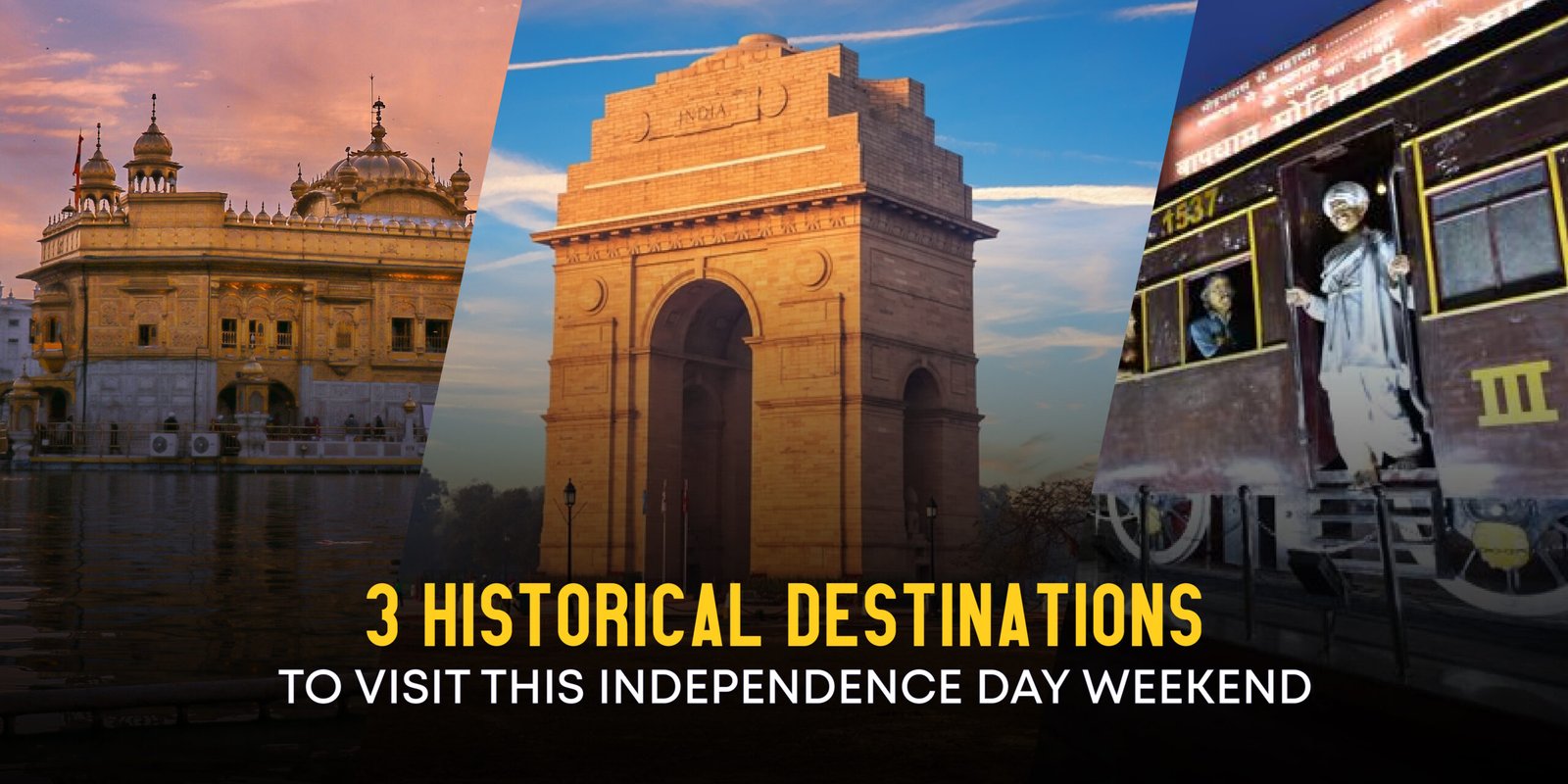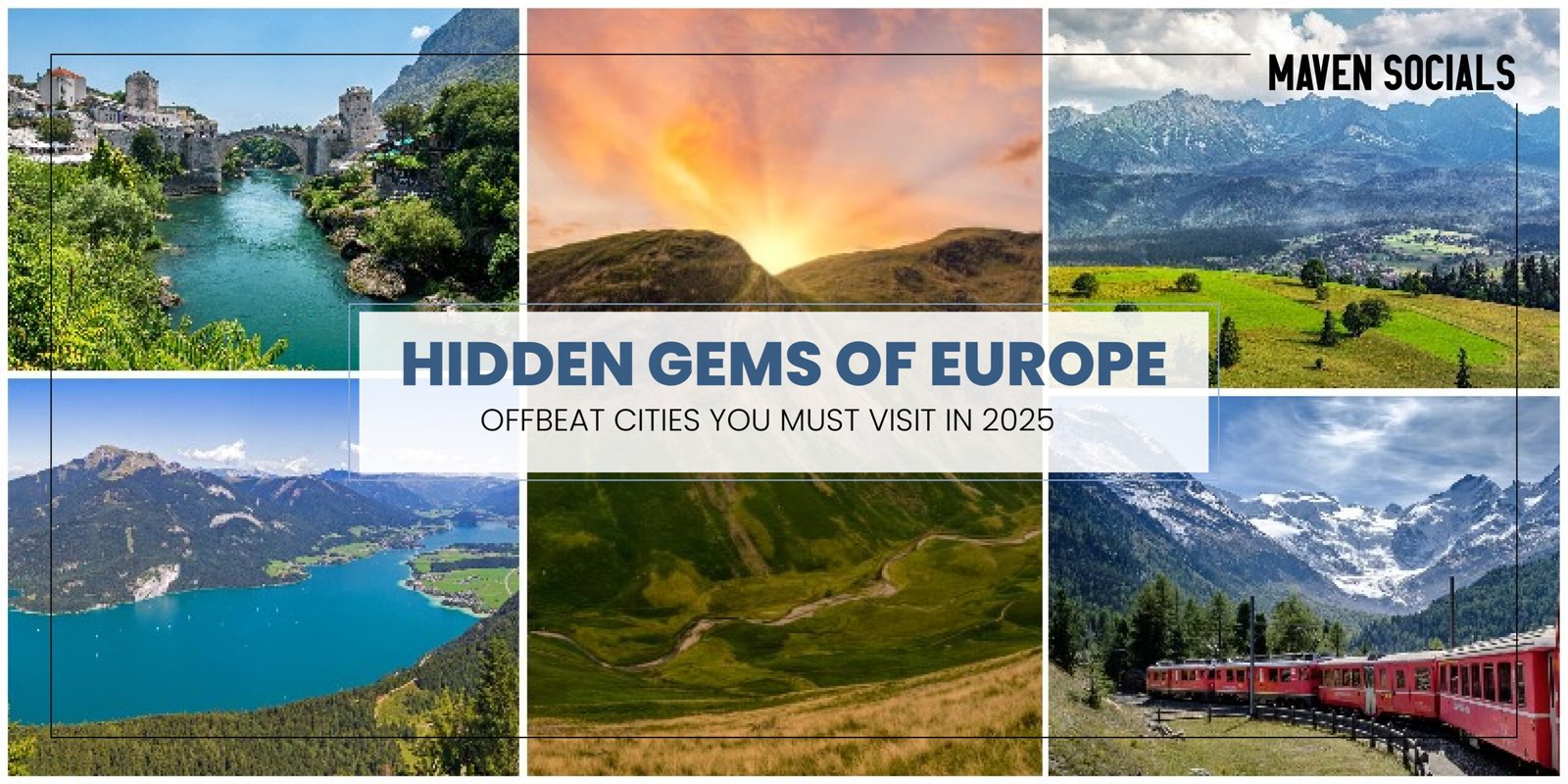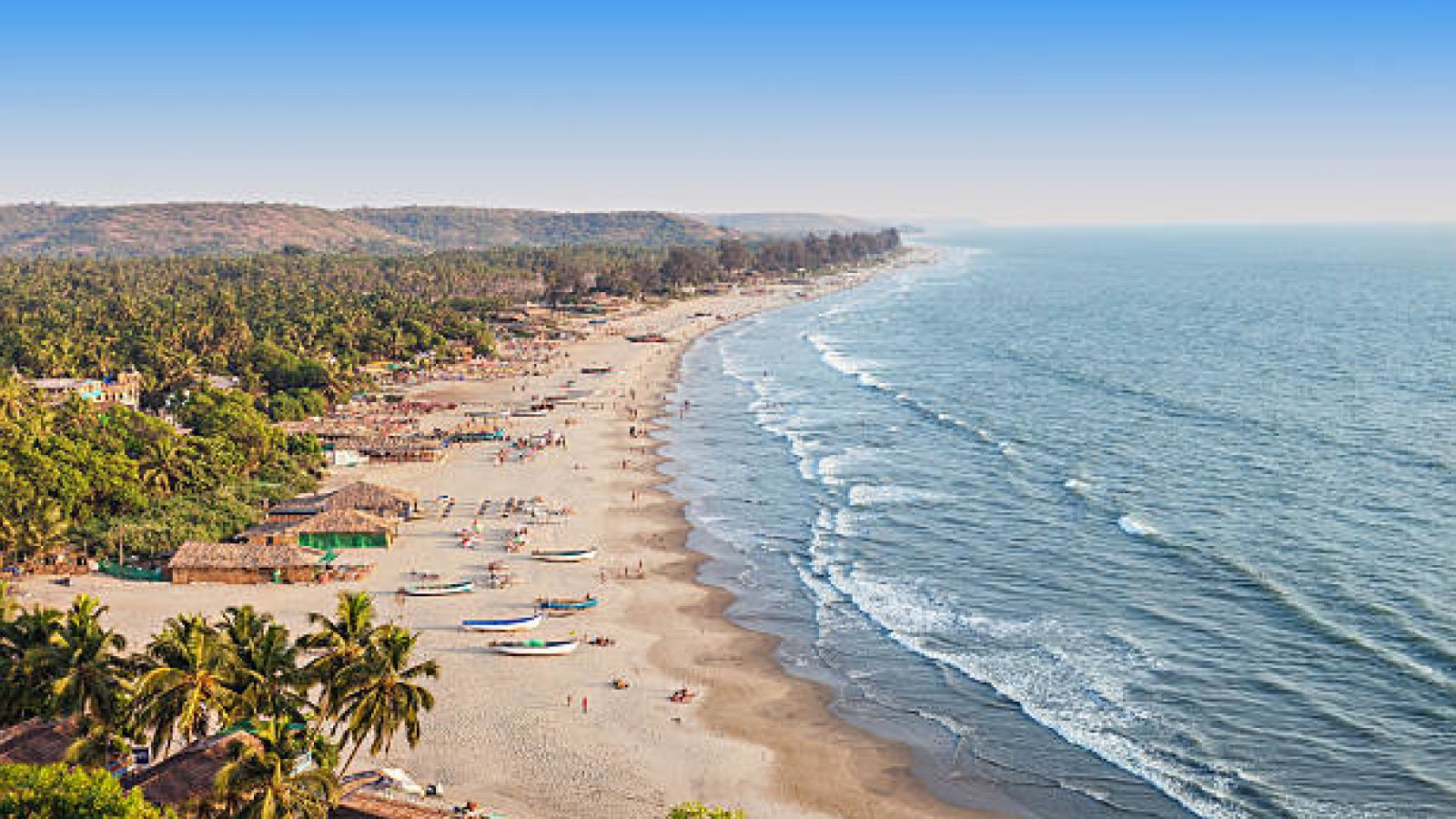As the tricolor waves proudly across the nation on August 15th, there’s no better way to celebrate India’s Independence Day than by walking through the very places where our freedom was won. This Independence Day travel guide takes you beyond the usual festivities to explore three magnificent historical places India that shaped our nation’s destiny.
These patriotic getaways offer more than just sightseeing – they provide a profound connection to our roots, allowing you to witness the courage, sacrifice, and determination that birthed our beloved nation. Whether you’re planning weekend trip ideas or seeking meaningful August 15 travel experiences, these destinations promise to stir your soul and deepen your appreciation for the freedom we cherish today.
In an era where we often get caught up in the digital world, visiting these sacred grounds of our independence struggle offers a chance to pause, reflect, and honor the heroes who made our freedom possible. Let’s embark on this journey through time and discover the stories that continue to inspire generations of Indians.
1. Delhi: The Heart of India’s Freedom Story
Delhi stands as the ultimate destination for Independence Day travel, where every monument tells a story of struggle, triumph, and transformation. The capital city witnessed the rise and fall of empires, the birth of a nation, and the dreams of millions coming true.
Historical Significance: Delhi served as the epicenter of India’s independence movement, from the Sepoy Mutiny of 1857 to the final triumph in 1947. The city’s Red Fort became the symbolic heart of free India when Pandit Jawaharlal Nehru delivered his famous “Tryst with Destiny” speech, and it continues to be the venue for the Prime Minister’s Independence Day address.
Key Monuments to Visit:
- Red Fort (Lal Qila): Walk through the same ramparts where the Indian flag was first hoisted on August 15, 1947. The fort’s museum houses artifacts from the freedom struggle, including personal belongings of freedom fighters and rare photographs of the independence ceremony.
- Raj Ghat: This serene memorial to Mahatma Gandhi offers a moment of quiet reflection. The eternal flame burns as a reminder of the Father of the Nation’s principles of non-violence and truth that guided India to freedom.
- India Gate: Originally built to honor British Indian soldiers, this iconic arch has become a symbol of national pride. The Amar Jawan Jyoti flame honors the unknown soldiers who sacrificed their lives for the nation.
- Shaheed Park: Visit the memorial dedicated to the three martyrs – Bhagat Singh, Sukhdev, and Rajguru – who were executed at this very spot. The park includes a museum showcasing their lives and revolutionary activities.
- Qudsia Bagh: Often overlooked, this historical garden was a significant meeting place for revolutionaries during the 1857 rebellion. The ruins still whisper stories of secret meetings and brave plans.
What to See and Do:
- Attend the Independence Day ceremony at Red Fort (book tickets in advance)
- Take a heritage walk through Old Delhi’s narrow lanes where freedom fighters once moved secretly
- Visit the National Museum to see artifacts from the independence movement
- Explore Chandni Chowk, where revolutionary activities were once coordinated
- Pay respects at the Rajghat memorial during sunset for a moving experience
2. Amritsar: The Golden City of Sacrifice and Valor
Amritsar holds a special place in India’s freedom narrative, marked by both tragedy and triumph. The city that houses the Golden Temple also witnessed one of the most defining moments in our independence struggle – the Jallianwala Bagh massacre.
Historical Significance: Amritsar became a symbol of British oppression and Indian resistance following the horrific events of April 13, 1919. The massacre at Jallianwala Bagh galvanized the entire nation against colonial rule and marked a turning point in the independence movement. The city also played a crucial role during Partition, witnessing both the pain of division and the hope of freedom.
Key Monuments to Visit:
- Jallianwala Bagh: This hallowed ground preserves the memory of the 379 innocent lives lost on that fateful day. The preserved bullet marks on walls, the martyrs’ well, and the memorial flame create a deeply moving experience that brings history to life.
- Golden Temple (Harmandir Sahib): While primarily a religious site, the Golden Temple played a significant role in providing refuge and support during the freedom struggle. The temple’s community kitchen fed countless freedom fighters and refugees during tumultuous times.
- Partition Museum: India’s first museum dedicated to the Partition of 1947 houses personal stories, artifacts, and testimonies that provide a human perspective on this historical event.
- Gobindgarh Fort: This 18th-century fort now serves as a museum showcasing Punjab’s rich history, including its role in the independence movement and the valor of Punjabi soldiers.
What to See and Do:
- Participate in the daily ceremony at the Golden Temple and volunteer in the community kitchen
- Spend contemplative time at Jallianwala Bagh, especially during the memorial service
- Visit the Partition Museum to understand the human cost of freedom
- Explore the narrow lanes of the old city where revolutionary activities once took place
- Attend the Wagah Border ceremony to witness the spirit of patriotism
3. Champaran, Bihar: Where Satyagraha Began
Champaran district in Bihar holds the distinction of being the birthplace of Mahatma Gandhi’s Satyagraha movement in India. This humble region, often overlooked in mainstream tourism, offers an authentic glimpse into the grassroots origins of our independence struggle.
Historical Significance: It was in Champaran that Gandhi first applied his philosophy of non-violent resistance to address the plight of indigo farmers exploited by British planters. The success of the Champaran Satyagraha in 1917 marked Gandhi’s emergence as a leader of the Indian independence movement and established the foundation for future freedom struggles.
Key Monuments to Visit:
- Gandhi Smriti Sangrahalaya, Motihari: This museum is housed in the very building where Gandhi stayed during his Champaran movement. The exhibits include his personal belongings, photographs, and documents from the historic satyagraha.
- Turkaulia Gandhi Ashram: Located in East Champaran, this ashram was established by Gandhi during his stay. The serene environment helps visitors understand the simplicity and dedication that characterized the freedom movement.
- Bhitiharwa Ashram: Another important site associated with Gandhi’s work in Champaran, this ashram showcases the practical aspects of his philosophy and his work with local farmers.
- Someshwar Fort: This ancient fort served as a meeting place for local leaders and freedom fighters during the Champaran movement, offering insights into the strategic aspects of the struggle.
What to See and Do:
- Walk through the villages where Gandhi worked with indigo farmers
- Visit local markets to understand the agricultural practices that sparked the movement
- Interact with descendants of farmers who participated in the original satyagraha
- Explore the rural landscape that shaped Gandhi’s understanding of India’s real challenges
- Attend local cultural programs that celebrate the legacy of the freedom movement
Travel Tips for Your Independence Day Journey
Best Time to Visit: The Independence Day weekend (August 15th) is ideal as many monuments host special ceremonies and cultural programs. However, be prepared for crowds at popular destinations like Red Fort. Consider visiting key sites early morning or late afternoon for a more contemplative experience.
How to Reach:
- Delhi: Well-connected by air, rail, and road from all major cities. The Delhi Metro provides excellent connectivity to historical sites.
- Amritsar: Sri Guru Ram Dass Jee International Airport connects to major cities. The city is also well-connected by train, with the Golden Temple just 15 minutes from the railway station.
- Champaran: Motihari is the nearest railway station, connected to major cities via Muzaffarpur junction. The nearest airport is Patna (150 km away).
Suggested 3-Day Itinerary:
- Day 1 – Delhi:
- Morning: Visit Red Fort and attend any Independence Day celebrations
- Afternoon: Explore India Gate and Raj Ghat
- Evening: Walk through Chandni Chowk and visit Shaheed Park
- Day 2 – Amritsar:
- Early morning: Golden Temple visit and community service
- Late morning: Jallianwala Bagh memorial
- Afternoon: Partition Museum and Gobindgarh Fort
- Evening: Wagah Border ceremony
- Day 3 – Champaran:
- Morning: Gandhi Smriti Sangrahalaya in Motihari
- Afternoon: Turkaulia Gandhi Ashram
- Evening: Village walk and interaction with locals
Additional Tips:
- Book accommodations well in advance for Independence Day weekend
- Carry a valid ID for entry into historical monuments
- Respect photography restrictions at sensitive sites
- Consider hiring local guides for deeper historical insights
- Pack light, comfortable walking shoes and weather-appropriate clothing
Conclusion
These three destinations offer more than just historical places India to visit – they provide a transformative journey that connects you to the soul of our nation. Walking through the corridors where our freedom fighters once treaded, standing in places where history was made, and experiencing the emotions that shaped our independence creates an unparalleled sense of patriotism and pride.
This Independence Day travel experience reminds us that freedom isn’t just a gift we inherited, but a responsibility we must nurture and protect. These patriotic getaways serve as powerful reminders of the price of freedom and the courage it took to achieve it.
As you plan your August 15 travel this year, consider stepping away from conventional celebrations and instead embark on this meaningful journey through India’s freedom trail. These weekend trip ideas will not only enrich your understanding of our nation’s history but also deepen your connection to the values and dreams that define us as Indians.
Ready to walk in the footsteps of our freedom fighters? Start planning your patriotic pilgrimage today. Share this guide with fellow history enthusiasts, bookmark it for your Independence Day weekend, and most importantly, experience the profound connection that comes from visiting these sacred sites of our freedom struggle.
Which historical destination will you visit first this Independence Day weekend? Share your travel plans and experiences as we collectively honor the legacy of those who gave us the gift of freedom.
Jai Hind! Let’s explore our roots and celebrate our freedom with deeper understanding and gratitude.














